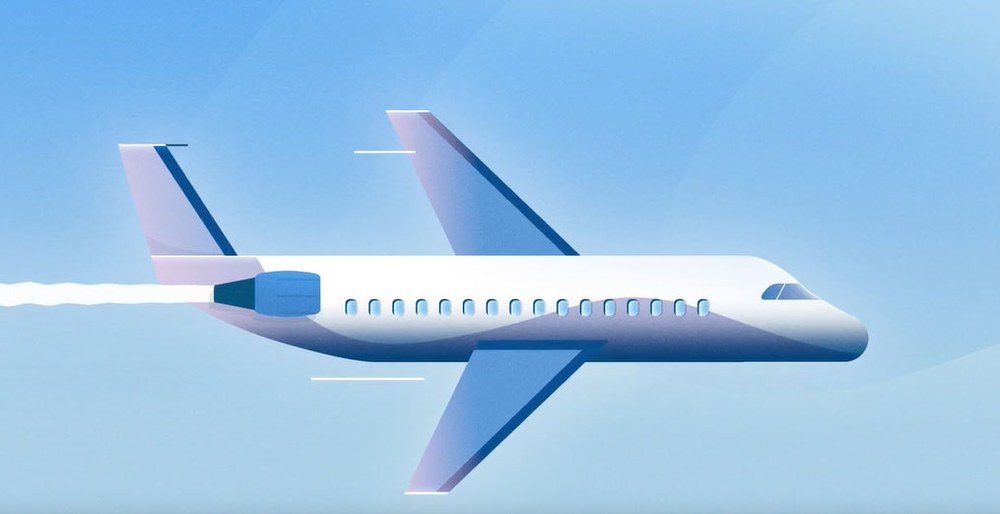Preventing contrails with the right flight altitude
- Since the beginning of the year, the Maastricht Upper Area Control Centre and DLR have been testing
alternative routes in real air traffic to prevent contrails. - Focal points: Aeronautics, atmospheric research, climate-friendly flight
With two-thirds of the impact of aviation on climate change believed to come from aircraft non-carbon-dioxide emissions, contrail prevention has a key role to play in curbing climate change. Since the beginning of 2021, Eurocontrol's Maastricht Upper Area Control Centre (MUAC), in partnership with the German Aerospace Center (Deutsches Zentrum für Luft- und Raumfahrt; DLR), has been conducting a first worldwide live operational trial on contrail prevention aimed at mitigating non-carbon-dioxide emissions. In total, 209 aircraft trajectories were included in the trial over the past 10 months.
During the trial, the technical feasibility of contrail prevention, the accuracy of ice-super-saturated region forecasts and the operational feasibility of vertical contrail prevention at specific traffic loads were carefully evaluated. The trial also revealed practical problems which need to be resolved if ATM measures are to be implemented to reduce the climate impact of aviation in the future. These concern, among other things, pertinent controller actions in specific circumstances, the precision of meteorological tools, and real-time feedback processes.
The trial runs were performed on selected dates, after 18:00 local time and during the night. A team of MUAC and DLR planners interpreted the predicted weather regarding ice-super-saturated regions and clouds, and gave instructions to controllers to avoid specific regions by means of vertical clearances of up to 2000 feet. A contrail prevention system was set up to prepare and implement operational procedures aimed at contrail prevention, and to start validating the methodology with satellite image analysis provided by DLR.
Other means of avoiding ice-super-saturated regions, such as pre-tactical planning, lateral avoidance or changes in aircraft equipment, were outside the scope of the 2021 MUAC/DLR contrail prevention trial. Aircraft which requested cruising altitudes above or below levels of predicted ice-super-saturated regions were cleared through these regions during climb or descent. Depending on the final results, a different approach may be proposed in the future.
The MUAC/DLR trial on contrail prevention is one contributor and component in a much wider picture of mitigating climate change. It is an important milestone in the transition from theory to practice and a stepping stone from science to engineering. Scientists and ATM managers hope that the results of this trial will contribute to sparking decisions for the future of aviation.
DLR has a long history of research into contrails and climate effects and is contributing with its expertise regarding the physics of the atmosphere, the modelling of contrails and contrail cirrus, and satellite image analysis with a view to evaluating the effectiveness of contrail prevention.
Eurocontrol's MUAC also has a long tradition of working on environmental topics, especially regarding fuel consumption. MUAC was at the origin of the European direct route network.
A video of the trial objectives can be viewed below.

YouTube – Eurocontrol: Innovating to prevent contrail formation for a better environment
Your consent to the storage of data ('cookies') is required for the playback of this video on Youtube.com. You can view and change your current data storage settings at any time under privacy.
YouTube/EUROCONTROL
About Eurocontrol's MUAC
Operated by Eurocontrol on behalf of four states, the Maastricht Upper Area Control Centre (MUAC) provides civil and military cross-border air traffic control in the upper airspace of Belgium, Luxembourg, the Netherlands and north-west Germany (from 7.5 kilometres or 24,500 feet). Some 1.9 million flights (pre-COVID-19 figures) pass through MUAC's area of responsibility each year, making it the third busiest air traffic control facility in Europe in terms of traffic volume. During the summer, peak days see over 5700 flights. MUAC's international area of responsibility is a perfect example of the simplification and harmonisation of airspace in Europe and is fully in line with the objectives of the Single European Sky.
More information at www.eurocontrol.int/muac or email muac.press@eurocontrol.int
DLR – research for climate-neutral air transport
The consequences of climate change demand action for climate-neutral air transport. This involves new technologies that will also ensure global mobility in the future. With its 25 institutes and facilities in the field of aeronautics research, DLR is driving this change forward with technologies for sustainable, environmentally compatible flight. Expertise from DLR's research programmes in space, energy and transport will also play an important role in this.
DLR has systems expertise in aeronautics research and sees itself in the role of an architect. DLR’s goal is 'emission-free air transport', in order to achieve the climate targets that have been set. In doing so, the results of research must flow directly into the development of new products.
There is a considerable need for research and development on the path to climate-compatible air transport, which requires continuous funding and support. Much of this needs to be researched at a fundamental level, tested in practice and approved. DLR can do this with large-scale facilities such as its research aircraft, propulsion demonstrators and large-scale computers. In 2020, DLR published the white paper 'Zero Emission Aviation' together with the German Aerospace Industries Association (Bundesverband der Deutschen Luft- und Raumfahrtindustrie; BDLI). DLR is currently working on a Zero Emission strategy.

